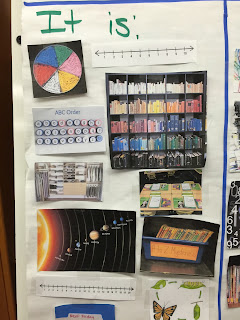Thank you to the parents who have already signed up for Class Dojo. If you have not already signed up, please check the invitation in your child's Friday Folder. Class Dojo is a tool I use to communicate with you about your child's work habits, track behavior, and to reinforce my expectations. I primarily use it to recognize positive behaviors. For the last two years over 97% of all of the points I awarded were positive and less than 3% were negative.
I will talk about Class Dojo in more detail at Back to School Night. Please don't worry about the number of points your child receives, on some days they may earn 10 and others only 3. The number is not important, it's the KIND of points they are receiving and patterns in their behavior.
Positive points add +1 to their running point total. These are behaviors that I specifically want to encourage. For example, if you see them earning points for being prepared you know that they are following my directions the first time and are ready with their materials. If they receive points for good carpet manners, you know that they are keeping their hands to themselves, listening attentively, and participating actively when we work as a class on the rainbow rug. If you see them earning points for providing evidence, that means they are explaining their thinking out loud to the class or their table group (ex/ "I know that 5 is odd because if I split it into two groups the groups are not equal" rather than just saying "5 is an odd number.")
Negative points subtract -1 from their running total. These are choices that are negatively impacting your child's learning and the learning of their classmates. I don't want you to think of these points as your child being "in trouble" or "bad," but more as behaviors they need to improve. If your child receives a negative point, have a discussion together about how to make a better choice. Also, please know that I only give negative points after warnings and reminders. For example, if you child is shouting out and interrupting my lesson and they don't stop after a reminder, they will receive "interrupting teaching." If they are rude or mean to another scholar they will receive "disrespectful to classmate" unless they sincerely apologize. Apologies are always encouraged first. If they are playing around in class or distracting a classmate with off topic chatting, they will receive "wasting learning time." "Bad carpet manners" means that when I am teaching a lesson at the rainbow rug they are doing things like lying on the floor or poking a classmate. Again, please remember that I always give a warning and chance to improve the behavior before I give a negative point.
This will be my third year using Class Dojo and the response from my parents in the past has been overwhelmingly positive. They appreciate being able to have a window into their child's work habits to praise them and support them as needed. I reset the points on the first of every month. Some parents choose to reward their child based on Class Dojo, such as taking them for frozen yogurt or picking out a new book if they reach a certain number of points in a month. I think that is a great idea. Please use positive reinforcement rather than making them feel nervous or upset when I communicate with you about their behavior. In the beginning you will probably see an occasional negative point while your child learns what is an isn't acceptable in a first grade classroom, especially if they are coming from a different educational environment. Please remember that negative points are simply opportunities to correct behavior and make a better choice next time.
Your child may enjoy Class Dojo even more if you help them to customize their monster avatar. Directions are on the paper I sent home in Friday Folders.
Please see me if I can clarify anything about Class Dojo before Back to School Night!

























